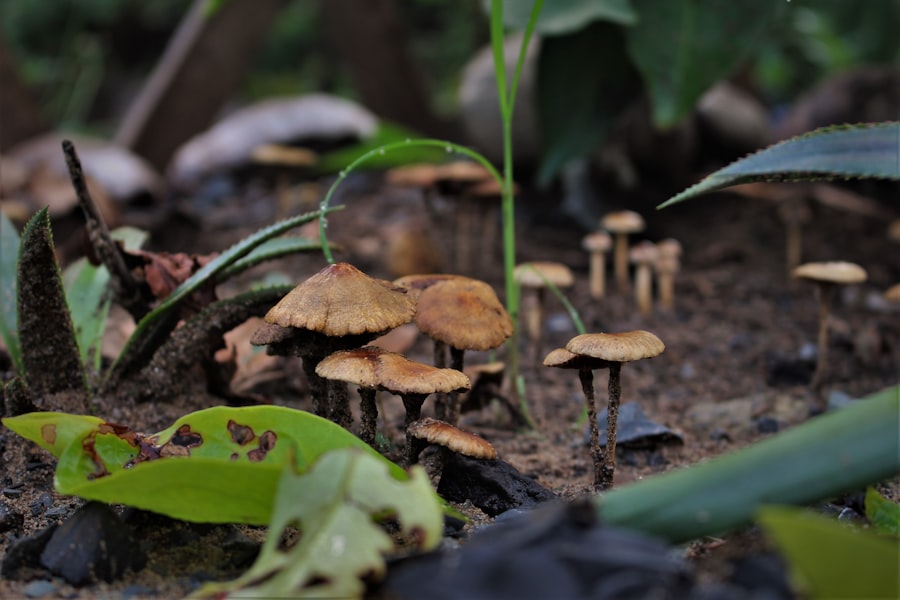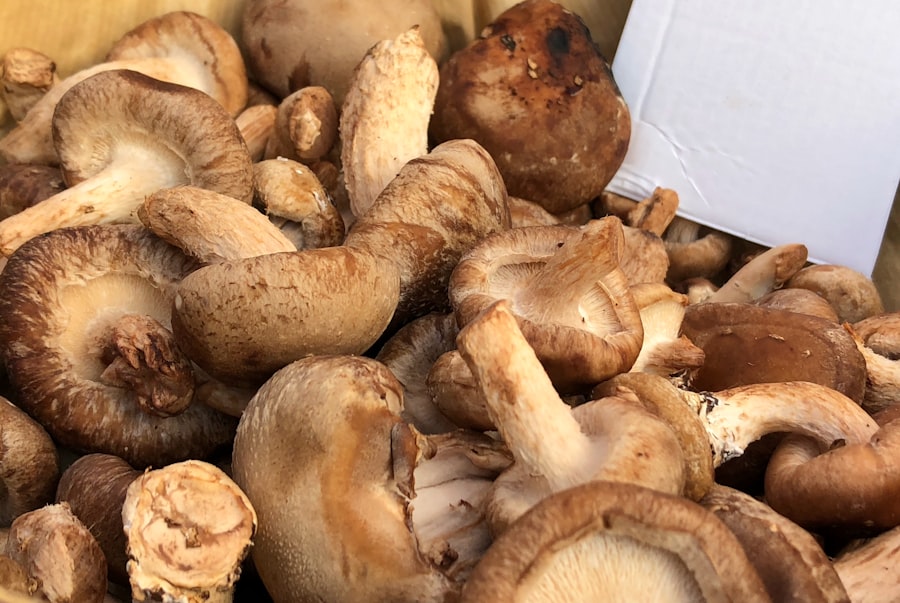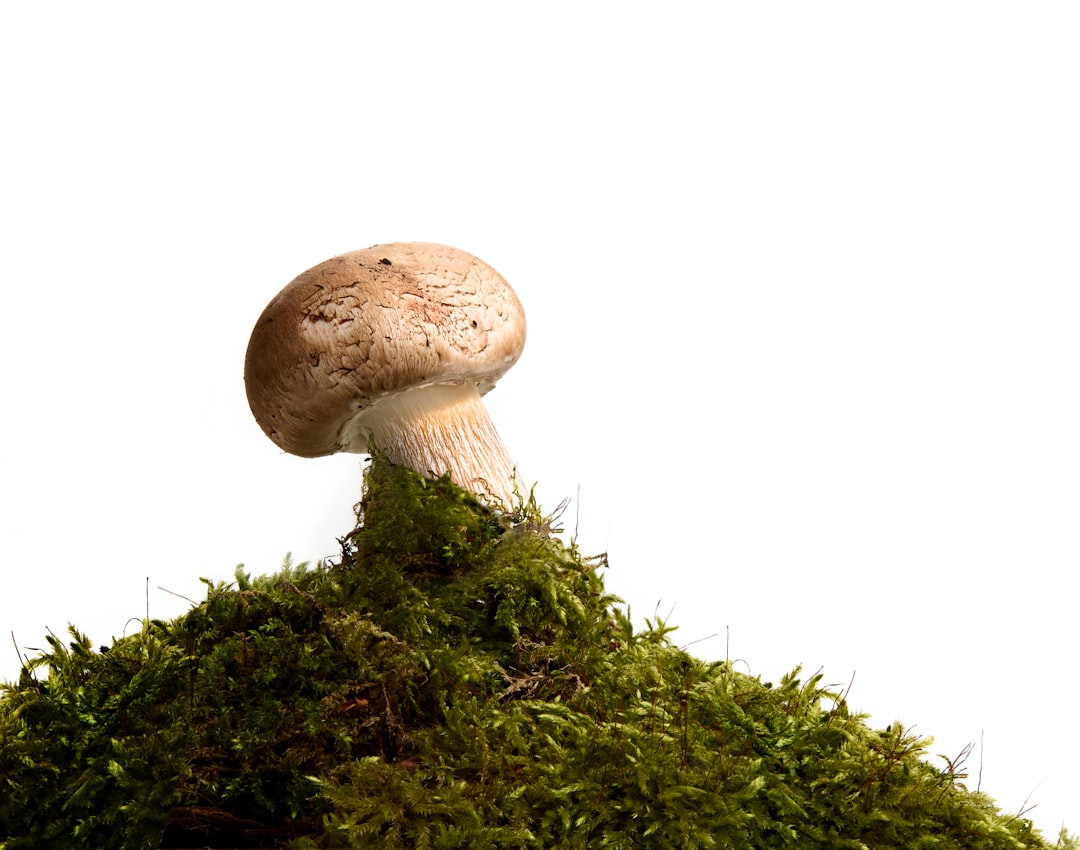Anthracnose disease is a term that encompasses a group of fungal infections affecting a wide variety of plants, including trees, shrubs, and herbaceous plants. The term “anthracnose” is derived from the Greek word “anthrakos,” meaning coal or charcoal, which aptly describes the dark lesions that often characterize the disease. This condition is primarily caused by fungi belonging to the genera Colletotrichum, Gloeosporium, and others.
These pathogens can lead to significant economic losses in agriculture and horticulture due to their ability to cause wilting, leaf drop, and fruit rot, ultimately affecting plant health and yield. The impact of anthracnose disease can be particularly severe in crops such as beans, corn, and various fruits. The disease can manifest in different forms depending on the host plant and environmental conditions, leading to a range of symptoms that can complicate diagnosis and management.
Understanding anthracnose disease is crucial for farmers, gardeners, and horticulturists alike, as it allows for the implementation of effective control measures to mitigate its effects.
Key Takeaways
- Anthracnose disease is a fungal infection that affects a wide range of plants, causing dark, sunken lesions on leaves, stems, and fruits.
- The disease is caused by various species of fungi in the genus Colletotrichum, which thrive in warm, humid conditions.
- Symptoms of anthracnose disease include small, dark spots on leaves, stems, and fruits, which can eventually lead to defoliation and fruit rot.
- Host plants affected by anthracnose disease include trees, shrubs, and various crops such as tomatoes, peppers, and beans.
- Conditions that favor anthracnose disease include warm, humid weather, poor air circulation, and overwatering, making prevention crucial for management.
Causes of Anthracnose Disease
The primary cause of anthracnose disease is the presence of specific fungal pathogens that thrive in particular environmental conditions. The most common culprits include species from the Colletotrichum genus, which are notorious for their ability to infect a wide range of plants. These fungi produce spores that can be spread through wind, water, or contaminated tools and equipment.
Once the spores land on a susceptible host, they germinate and penetrate plant tissues, leading to infection. Environmental factors play a significant role in the development of anthracnose disease. High humidity and warm temperatures create an ideal environment for fungal growth and spore germination.
For instance, prolonged periods of wet weather can facilitate the spread of spores, while high moisture levels on plant surfaces can promote infection. Additionally, stressed plants—those suffering from drought or nutrient deficiencies—are more susceptible to anthracnose, as their weakened state makes them less capable of resisting fungal invasion.
Symptoms of Anthracnose Disease

Symptoms of anthracnose disease can vary widely depending on the host plant and the specific fungal species involved. Commonly observed symptoms include dark, sunken lesions on leaves, stems, and fruits. These lesions may appear as small spots initially but can expand over time, leading to significant tissue damage.
In some cases, the lesions may develop a characteristic yellow halo or margin, which can help in identifying the disease. In addition to leaf spots, anthracnose can cause wilting and premature leaf drop, which can severely impact a plant’s overall health. In fruit-bearing plants, anthracnose often leads to fruit rot, rendering the produce unmarketable.
For example, in avocado trees infected with Colletotrichum gloeosporioides, fruit may develop dark lesions that lead to decay before harvest. The symptoms not only affect the aesthetic quality of the plants but also their productivity and longevity.
Host Plants Affected by Anthracnose Disease
| Host Plant | Common Name | Anthracnose Disease Symptoms |
|---|---|---|
| Tomato | Solanum lycopersicum | Dark, sunken lesions on fruits and stems |
| Bean | Phaseolus vulgaris | Irregularly shaped lesions on leaves and pods |
| Mango | Mangifera indica | Black, sunken spots on fruits |
| Pepper | Capsicum annuum | Dark, sunken lesions on fruits and stems |
Anthracnose disease has a broad host range, affecting numerous plant species across various families. Some of the most commonly affected plants include economically important crops such as beans (Phaseolus spp.), corn (Zea mays), and various fruits like strawberries (Fragaria spp.), avocados (Persea americana), and mangoes (Mangifera indica). Each host plant may exhibit unique symptoms based on its susceptibility to specific anthracnose pathogens.
Trees are also significantly impacted by anthracnose disease. For instance, shade trees like sycamores (Platanus spp.) and oaks (Quercus spp.) can suffer from severe leaf drop due to anthracnose infections. In these cases, the disease can lead to reduced aesthetic value and increased vulnerability to other pests and diseases.
The wide range of host plants affected by anthracnose underscores the importance of understanding this disease for effective management in both agricultural and ornamental settings.
Conditions that Favor Anthracnose Disease
Several environmental conditions contribute to the proliferation of anthracnose disease. High humidity levels are particularly conducive to fungal growth; when combined with warm temperatures—typically between 60°F and 80°F (15°C to 27°C)—the likelihood of infection increases significantly. Prolonged wetness on plant surfaces, whether from rainfall or overhead irrigation, creates an ideal environment for spore germination and subsequent infection.
Additionally, cultural practices can influence the prevalence of anthracnose disease. Overcrowding plants can lead to poor air circulation and increased humidity within the canopy, creating a microclimate that favors fungal development. Similarly, practices such as excessive nitrogen fertilization can promote lush foliage growth that is more susceptible to infection.
Understanding these conditions is essential for implementing effective management strategies to reduce the risk of anthracnose outbreaks.
Prevention of Anthracnose Disease

Preventing anthracnose disease requires a multifaceted approach that combines cultural practices with environmental management. One effective strategy is to select resistant plant varieties whenever possible. Many crop species have been bred for resistance to specific anthracnose pathogens, which can significantly reduce the incidence of disease in affected areas.
In addition to selecting resistant varieties, proper cultural practices play a crucial role in prevention. Ensuring adequate spacing between plants allows for improved air circulation and reduces humidity levels within the canopy. This practice helps minimize conditions favorable for fungal growth.
Furthermore, implementing proper irrigation techniques—such as drip irrigation—can help keep foliage dry while providing necessary moisture to the root zone. Regularly removing debris and fallen leaves from around plants also reduces potential sources of infection.
Treatment of Anthracnose Disease
Once anthracnose disease has been identified in a plant population, timely treatment is essential to mitigate its effects. The first step in treatment often involves removing and destroying infected plant material to prevent further spread of the disease. This includes pruning affected branches or leaves and disposing of them properly rather than composting them, which could allow pathogens to survive.
In addition to physical removal of infected tissues, fungicides may be employed as part of an integrated management strategy. However, it is crucial to apply fungicides at the first sign of symptoms for maximum effectiveness. Regular monitoring for signs of infection allows for early intervention and can help prevent widespread outbreaks within a crop or garden setting.
Chemical Control for Anthracnose Disease
Chemical control methods for anthracnose disease primarily involve the application of fungicides specifically formulated to target the pathogens responsible for the disease. Several fungicides are available on the market that can effectively manage anthracnose when applied according to label instructions. Systemic fungicides penetrate plant tissues and provide longer-lasting protection compared to contact fungicides that only protect surfaces.
It is important to rotate fungicides with different modes of action to prevent the development of resistance among fungal populations. For example, using a combination of strobilurins and triazoles can enhance efficacy while reducing the risk of resistance development. Additionally, applying fungicides during critical growth stages—such as flowering or fruit set—can provide targeted protection when plants are most vulnerable.
Cultural Control for Anthracnose Disease
Cultural control practices are essential components of an integrated approach to managing anthracnose disease effectively. These practices focus on modifying agricultural techniques and environmental conditions to reduce disease incidence without relying solely on chemical treatments. One key cultural practice is crop rotation; alternating crops with different families can disrupt the life cycle of anthracnose pathogens and reduce their populations in the soil.
Another important cultural control measure is maintaining optimal plant health through proper fertilization and irrigation practices.
Additionally, ensuring proper drainage in planting areas helps prevent waterlogging—a condition that favors fungal growth.
Biological Control for Anthracnose Disease
Biological control methods offer an environmentally friendly alternative for managing anthracnose disease by utilizing natural organisms that suppress fungal pathogens. Various beneficial microorganisms have been identified as potential biocontrol agents against anthracnose fungi. For instance, certain strains of Trichoderma spp., a genus of fungi known for their antagonistic properties against plant pathogens, have shown promise in reducing anthracnose severity in various crops.
The application of these biocontrol agents can be done through soil amendments or foliar sprays during critical growth stages when plants are most susceptible to infection. Additionally, promoting biodiversity in agricultural systems by incorporating cover crops or companion planting can enhance populations of beneficial organisms that naturally suppress anthracnose pathogens.
Integrated Management of Anthracnose Disease
An integrated management approach combines multiple strategies—cultural practices, chemical treatments, biological controls—to effectively manage anthracnose disease while minimizing environmental impact. This holistic approach begins with thorough monitoring for early detection of symptoms and understanding local environmental conditions that favor disease development. Implementing resistant varieties forms a foundational aspect of integrated management; however, it should be complemented by sound cultural practices such as crop rotation and proper irrigation techniques.
When necessary, judicious use of fungicides should be incorporated into the management plan while rotating products with different modes of action to prevent resistance development. Furthermore, fostering beneficial organisms through biological control methods enhances overall plant health and resilience against diseases like anthracnose. By integrating these diverse strategies into a cohesive management plan, growers can effectively reduce the incidence and severity of anthracnose disease while promoting sustainable agricultural practices that protect both crops and the environment.
If you are dealing with Anthracnose Disease in your garden, you may also be interested in learning about how to prevent lots of small holes in your lawn. Check out this helpful article on how to deal with small holes in your lawn for more information on maintaining a healthy and vibrant outdoor space.
FAQs
What is Anthracnose Disease?
Anthracnose disease is a fungal infection that affects a wide range of plants, including trees, shrubs, and crops. It is caused by various species of fungi in the genus Colletotrichum.
What are the symptoms of Anthracnose Disease?
Symptoms of anthracnose disease can vary depending on the host plant, but common symptoms include dark, sunken lesions on leaves, stems, and fruits, as well as defoliation, dieback, and cankers on woody plants.
How is Anthracnose Disease spread?
Anthracnose disease is spread through spores that are produced in infected plant tissues. These spores can be spread by wind, rain, and insects, as well as through contaminated tools and equipment.
How can Anthracnose Disease be managed?
Management of anthracnose disease often involves cultural practices such as pruning infected plant parts, improving air circulation, and avoiding overhead irrigation. Fungicides may also be used to control the disease in severe cases.
Which plants are most susceptible to Anthracnose Disease?
Anthracnose disease can affect a wide range of plants, including but not limited to, ash trees, maple trees, dogwood trees, and various fruit crops such as strawberries and peppers.

